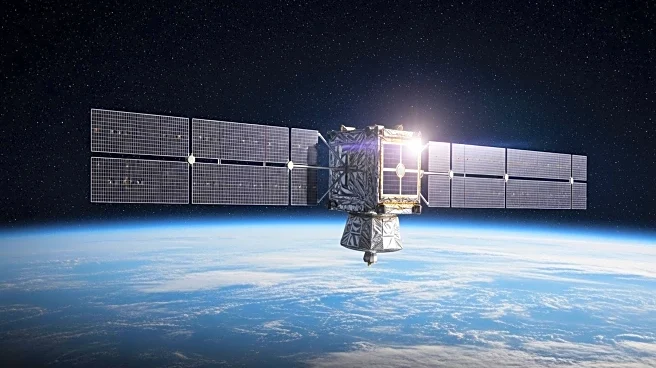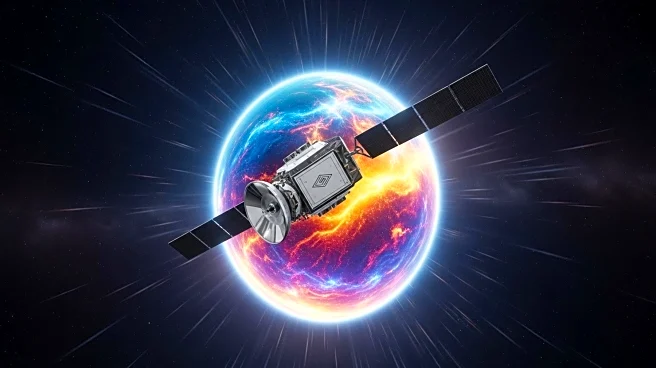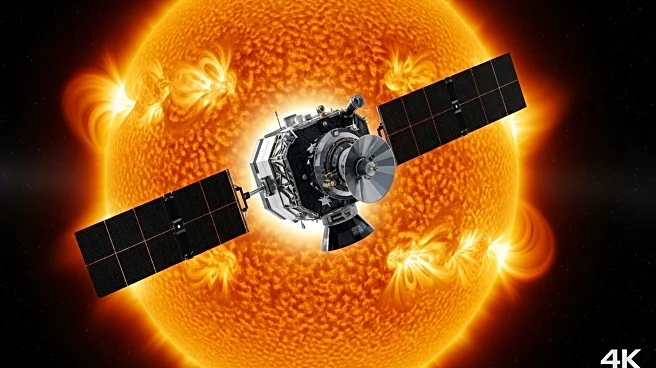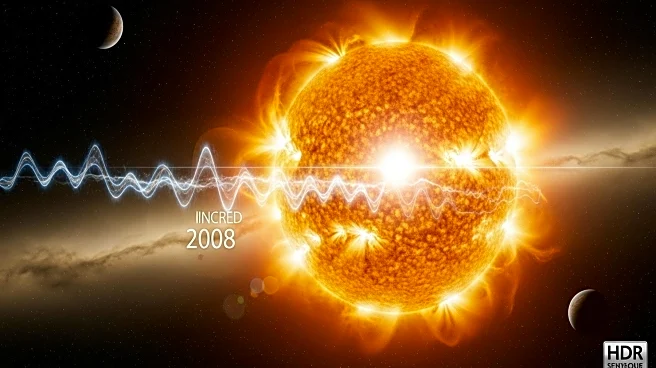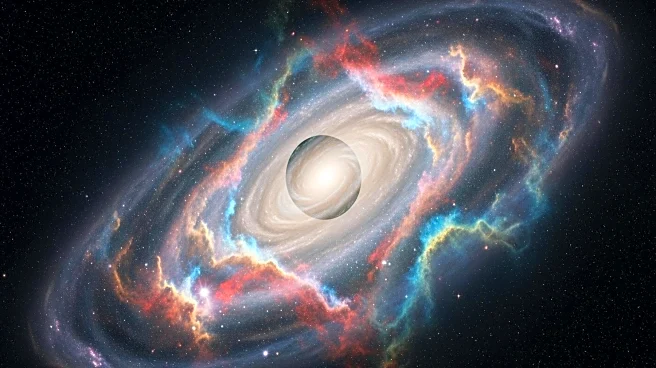What's Happening?
Researchers from the University of St Andrews have made a significant breakthrough in understanding solar flares, revealing that particles within these flares are much hotter than previously believed. The study, published in the Astrophysical Journal Letters, indicates that ions in solar flares can reach temperatures over 60 million degrees, which is 6.5 times hotter than earlier estimates. This discovery addresses a long-standing mystery about the Sun's behavior, particularly the broadening of flare spectral lines observed since the 1970s. The research team, led by Dr. Alexander Russell, found that magnetic reconnection processes heat ions more intensely than electrons, challenging the historical assumption that both particles share the same temperature. This new understanding could reshape solar physics by explaining the enigmatic line widths of solar flare spectra.
Why It's Important?
This discovery has significant implications for solar physics and our understanding of solar activity's impact on Earth. Solar flares are known to increase solar X-rays and radiation, posing risks to spacecraft, astronauts, and affecting Earth's upper atmosphere. By identifying the true temperatures of ions in solar flares, scientists can better predict and mitigate these risks. The findings also contribute to a broader understanding of magnetic reconnection, a fundamental process in plasma physics, which could influence future research in space weather forecasting and the development of technologies to protect satellites and other space-based infrastructure.
What's Next?
The research opens new avenues for further investigation into solar flare dynamics and their effects on space weather. Scientists may now explore the implications of super-hot ions in other solar phenomena and refine models predicting solar activity. This could lead to improved forecasting of solar storms and their potential impacts on Earth. Additionally, the study encourages a reevaluation of existing solar physics theories, potentially leading to new insights into the Sun's behavior and its interaction with the solar system.
Beyond the Headlines
The study's findings highlight the importance of interdisciplinary research, as the connection between magnetic reconnection and solar flares was made by integrating knowledge from various fields. This approach could inspire similar cross-disciplinary collaborations in other areas of astrophysics and space science, fostering a deeper understanding of complex cosmic phenomena.



